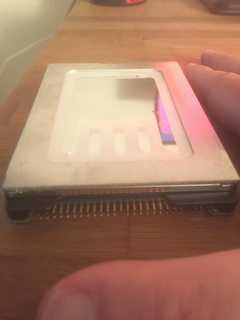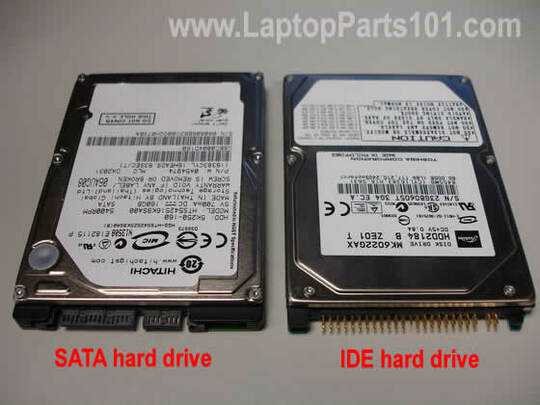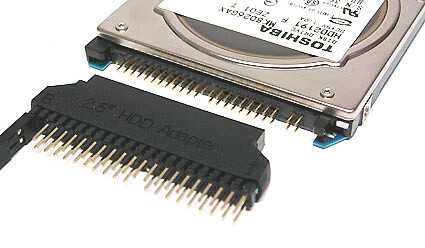46
3
My girlfriend has an old laptop-drive she wants me to grab data from. I want to buy a usb-adapter for it, but I have no clue as to which kind of disk this is. There are no text printed on the drive except from "Made in China" and "F4".
The hard drive's size is 7 cm × 9,5 cm excluding the pins. It seems to be 24 columns of pins with 2 rows, (24 × 2 = 48) pins total. It is a small space between two columns of pins and the other 22 columns.




Its hard to tell from the picture, but it looks like this hard drive might be in an enclosure too. So the other answers aren't wrong but it may be easier to get at the hard drive without its enclosure. ...Or not perhaps too. – mkingsbu – 2017-05-25T16:40:26.303
11This is the miniaturized 2.5 inch or laptop version of PATA/IDE. It is electrically compatible with the 3.5 inch 40 pin version plus the separate power harness, but not mechanically compatible without an adapter. – Chris Stratton – 2017-05-25T18:00:30.030
10@mkingsbu Nah, that's bog-standard, non-enclosed 2.5" IDE. – underscore_d – 2017-05-25T18:01:45.863
Oh I didn't realize it was that small. Hard to tell from the picture. That makes sense. – mkingsbu – 2017-05-25T19:17:57.263
Any USB adapter with two IDE choices will work. You can still buy these as an SSD, – mckenzm – 2017-05-28T03:51:14.580